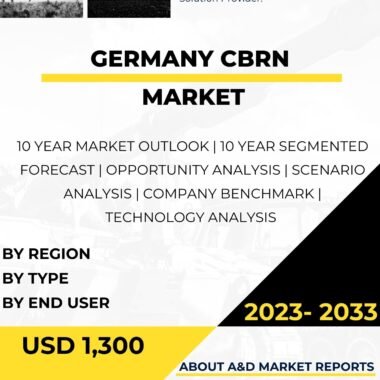Description
The South Korea Chemical, Biological, Radiological, and Nuclear (CBRN) market is a vital component of the nation’s defense industry, responsible for safeguarding against the threats posed by CBRN hazards. CBRN defense encompasses a range of capabilities and technologies designed to detect, protect against, and respond to chemical, biological, radiological, and nuclear threats. This article provides an in-depth analysis of the current state, growth drivers, challenges, key players, and future prospects of the South Korea CBRN market.
The historical context of the South Korea CBRN market dates back to the nation’s post-war era, during which it faced significant security threats and the need to build a robust defense infrastructure. As South Korea sought to enhance its military capabilities, the development of CBRN defense capabilities became crucial to protect against potential hazards and ensure national security.
In the current landscape, the South Korea CBRN market has evolved significantly to include a diverse array of technologies and capabilities. It encompasses detection and monitoring systems, protective equipment, decontamination solutions, and specialized training for CBRN response personnel.
One of the primary growth drivers for the South Korea CBRN market is the country’s focus on modernizing its military forces and strengthening its defense against CBRN threats. As geopolitical complexities persist in the region, there is a growing emphasis on enhancing defense capabilities, including CBRN defense.
Moreover, South Korea’s proximity to potential adversaries and the threat of CBRN attacks underscore the importance of having robust CBRN defense capabilities. Protecting against CBRN hazards is critical for maintaining military readiness and safeguarding public safety in the event of an emergency.
Furthermore, the South Korea CBRN market benefits from the nation’s focus on indigenization and developing homegrown defense technologies. The government’s commitment to fostering domestic defense capabilities has led to increased investments in research and development, driving innovation in CBRN defense technology.
Additionally, strategic collaborations with international defense suppliers have been instrumental in accessing advanced CBRN defense technologies and expertise. Partnering with established global companies allows for technology transfer and enables South Korea to leverage best practices in CBRN defense development.
The South Korea CBRN market also derives growth from exports to international markets. South Korean companies have gained recognition for producing reliable and high-quality CBRN defense equipment, attracting demand from various countries worldwide.
However, the market also faces several challenges. One of the primary challenges is the constantly evolving nature of CBRN threats. As hostile actors develop new tactics and technologies, the CBRN defense industry must remain adaptive and innovative to stay ahead of emerging threats.
Moreover, CBRN defense requires a multidisciplinary approach, involving collaboration between various government agencies and sectors. Coordinating efforts and resources among different stakeholders can be complex and challenging.
To address these challenges and ensure sustained growth, South Korea’s defense industry must prioritize research and development. Investing in advanced engineering capabilities will enable the country to develop cutting-edge CBRN defense systems, maintaining a competitive edge in the global market.
Furthermore, fostering strategic collaborations with international partners can enhance technological capabilities and provide access to broader markets for South Korean CBRN defense solutions. Collaborating with allied nations fosters knowledge exchange and strengthens mutual defense capabilities.
The South Korean government’s continued support for the defense industry is crucial for promoting growth in the CBRN market. Financial backing for research and development initiatives, as well as procurement programs, will drive innovation and ensure the development of state-of-the-art CBRN defense technologies.
Moreover, promoting a skilled workforce and providing training and education in CBRN defense operations will enhance the local talent pool and create a sustainable ecosystem for the South Korea market.
In conclusion, the South Korea CBRN market is a vital component of the nation’s defense industry, responsible for safeguarding against the threats posed by chemical, biological, radiological, and nuclear hazards. Driven by the country’s focus on modernizing its military forces, indigenizing defense technologies, and expanding export opportunities, the market continues to grow steadily. However, challenges related to innovation, global competition, and coordination among various stakeholders require proactive measures from the government and the defense industry to ensure sustained growth and competitiveness in the global market. By investing in research and development, fostering strategic collaborations, and promoting a skilled workforce, South Korea can strengthen its position as a key player in the global CBRN market and enhance its overall defense capabilities.




